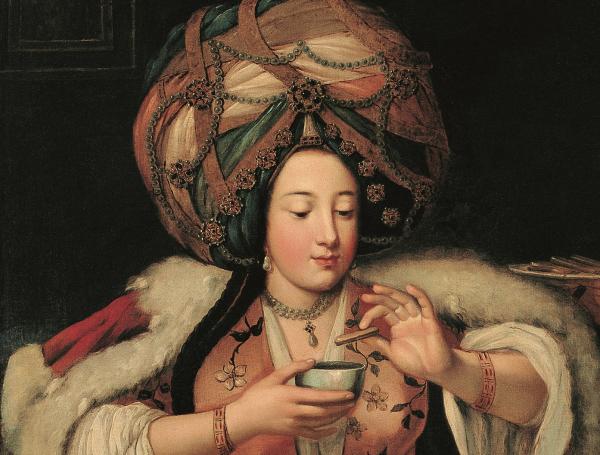A morning without a cup of coffee seems unimaginable to many of us today, but the drink has a long history originating in the Islamic world that led to today’s global coffee culture. As a hot beverage, coffee comes from 15th-century Yemen, where Sufis are credited with the propagation of roasting and consuming coffee beans likely adapted from practices in Ethiopia to stay awake during the night-long meditation, an idea that may strike a chord for anyone who has ever pulled an all-nighter to work or study.
“From Yemen, coffee culture eventually traveled throughout the Islamic world and it was fully adopted by the Ottomans. Coffee by the 16th century was popular enough that coffee houses began to open,” said Linda Komaroff, Curator and Department Head, Art of the Middle East, who curated the exhibition Dining with the Sultan: The Fine Art of Feasting (on view through August 4). “Almost as soon as they opened coffee houses were closed by imperial decree. There was a concern about over-caffeinated men, for the most part, beginning to speak about politics.”
While coffee houses were periodically prohibited from the time they were first introduced in Istanbul, drinking coffee in private and at official occasions continued among the ruling classes and became an essential part of Ottoman state protocol. As a commodity, it had a significant impact on the daily rhythms of urban life in early modern Ottoman and Safavid lands and eventually across the globe, and although coffee drinking’s material culture probably started quite simply, it evolved through the centuries, leaving behind a legacy of ornate objects that may look somewhat familiar to us today.
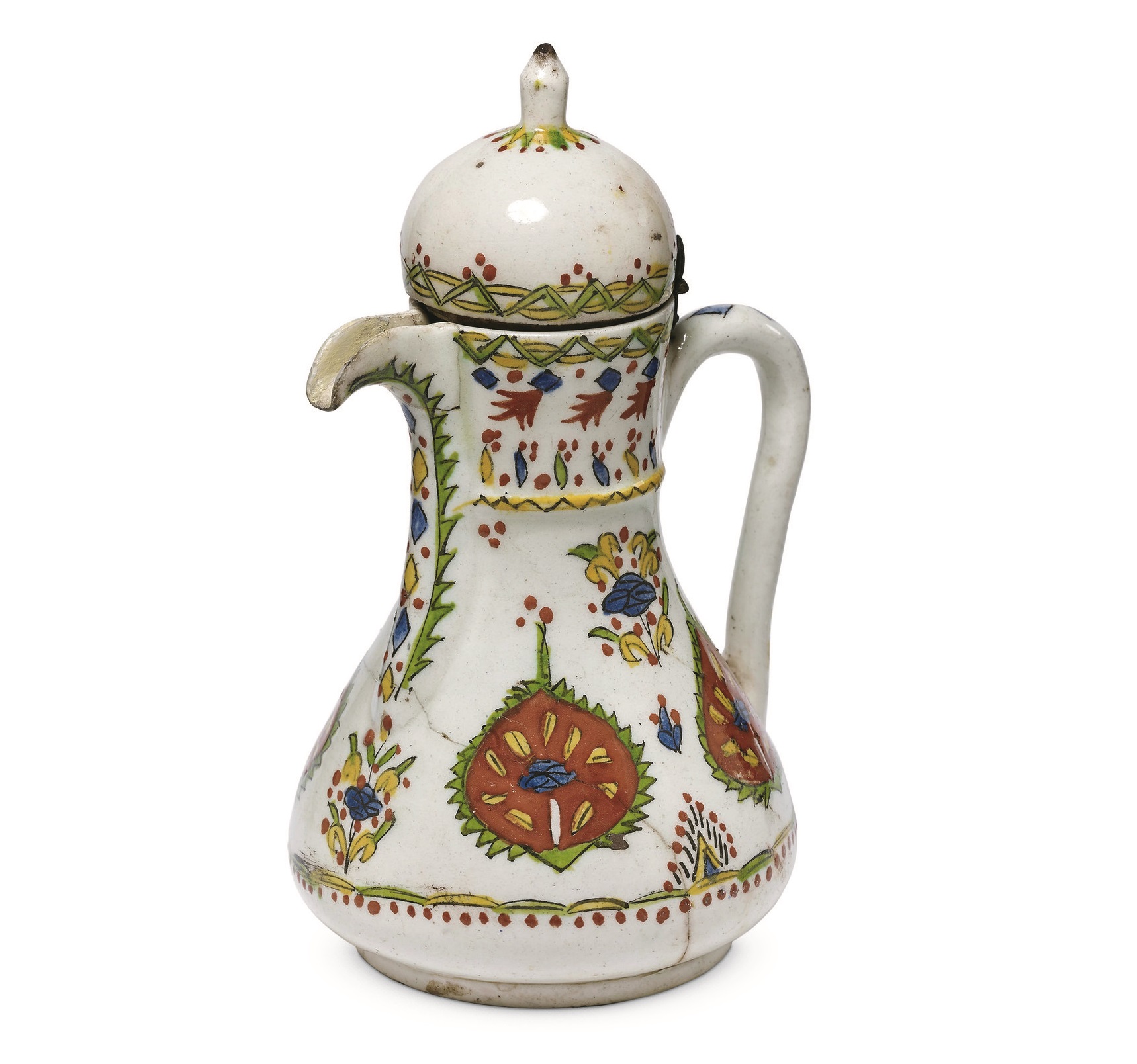
Since coffee was such a large part of domestic life and hospitality in Ottoman lands, many people invested in sets that included objects like pots, cups, and saucers to serve it in. In the 18th century, the western Anatolian town of Kütahya became an important center of ceramic production, particularly known for its tableware, including coffee sets that were sold not just within the Ottoman empire but also exported to Europe, where coffee drinking was also taking hold.
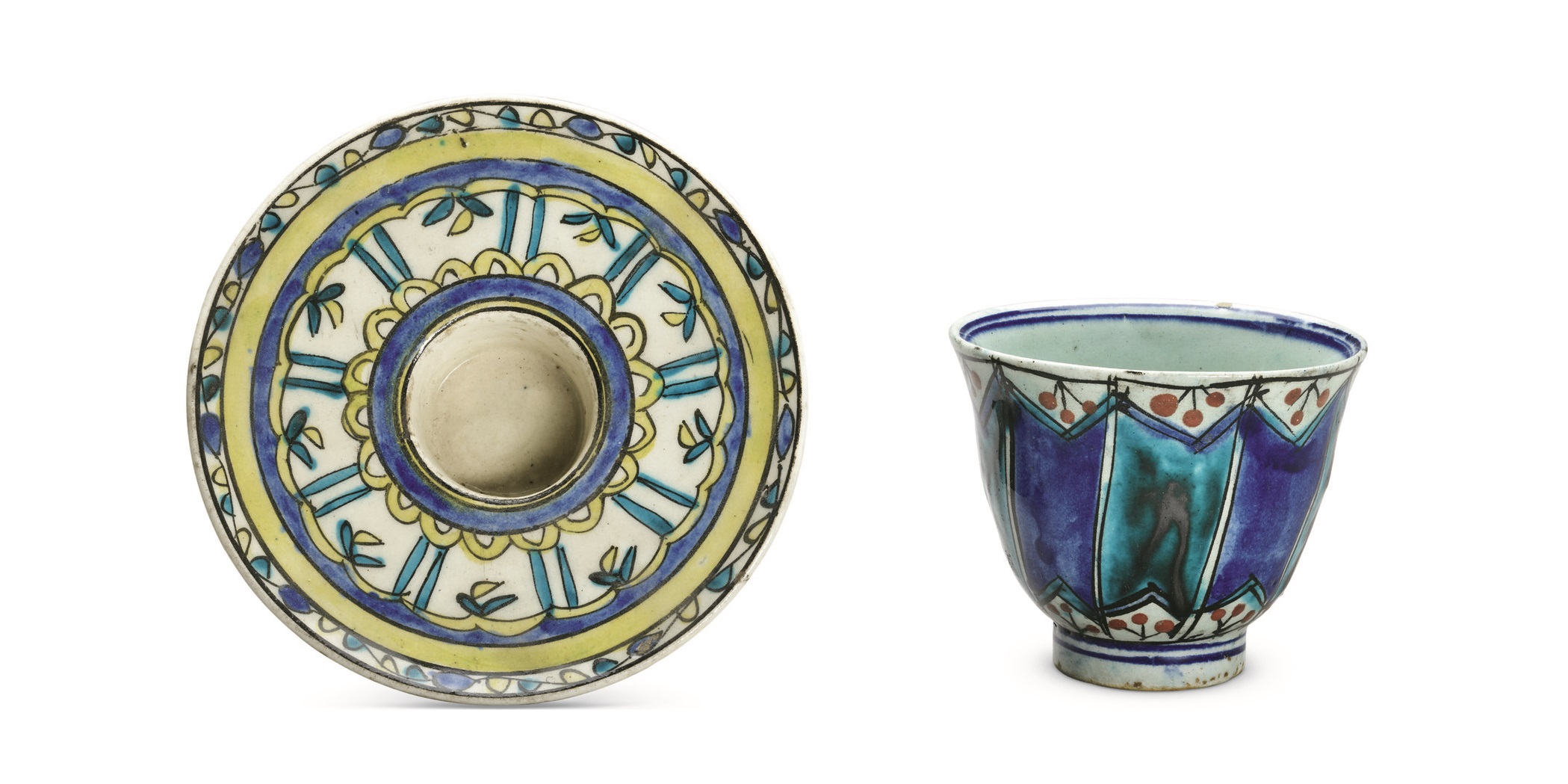
Kütahya wares displayed a colorful mix of styles and shapes, with diverse influences reflecting a combination of tastes fostered by international trade. Vibrant palettes and lively floral patterns were likely inspired by Indian cotton textiles, while the forms of some coffee cups seem to have been influenced by those produced in European cities like Vienna and Meissen.

Among the Ottoman elite, coffee was served with not only sweets but with other accompaniments like pipes of tobacco and incense. Though today we might be more used to ingredients like rosewater flavoring our lattes, rosewater was decanted over the hands and face from sprinklers like this colorful example.
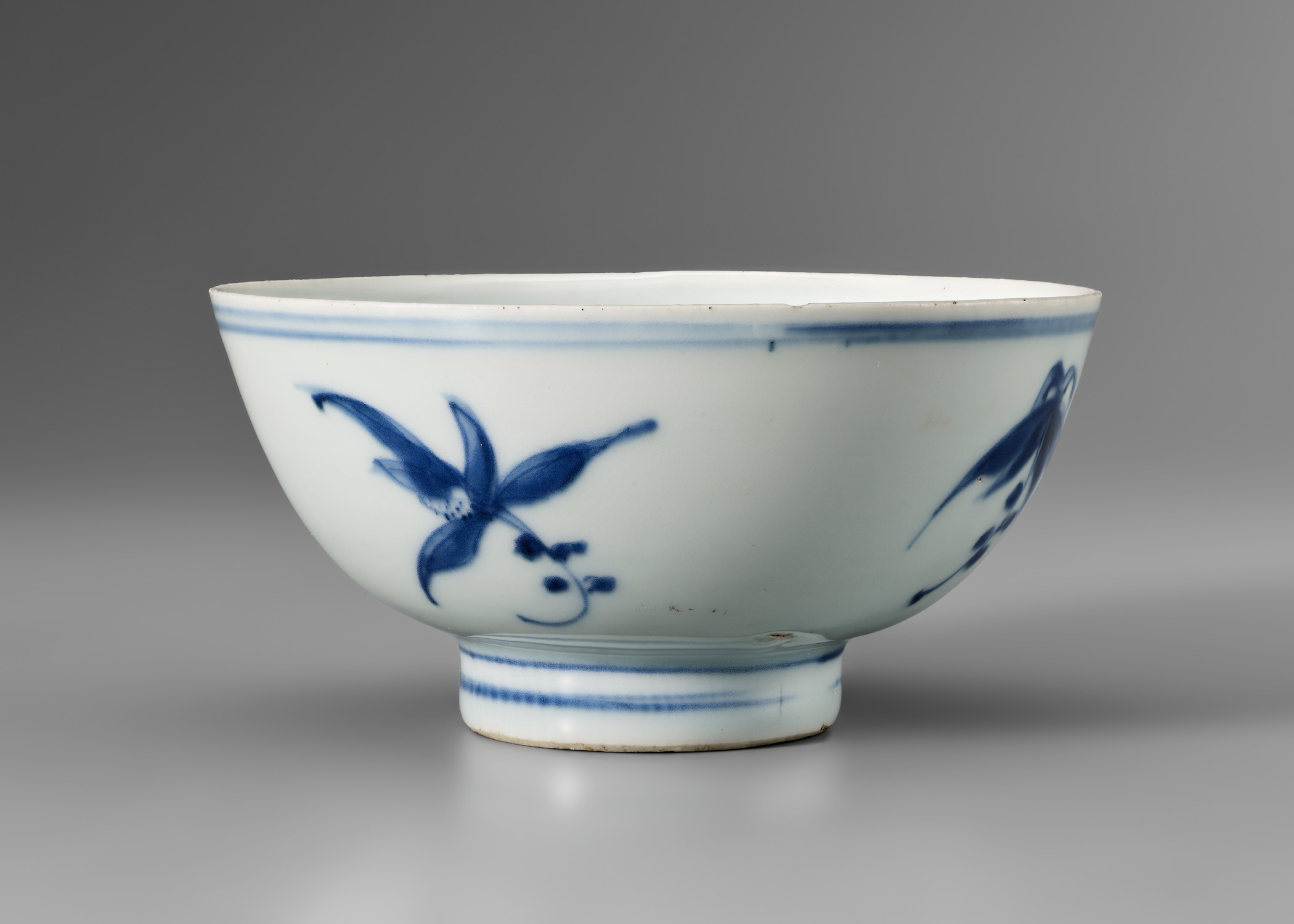
Small bowls made of Chinese porcelain were often used at the Ottoman court for drinks, driving the demand for bowls of this shape and size, a similar kind of which can be seen depicted in the painting Enjoying Coffee, painted in Turkey in the first half of the 18th century.
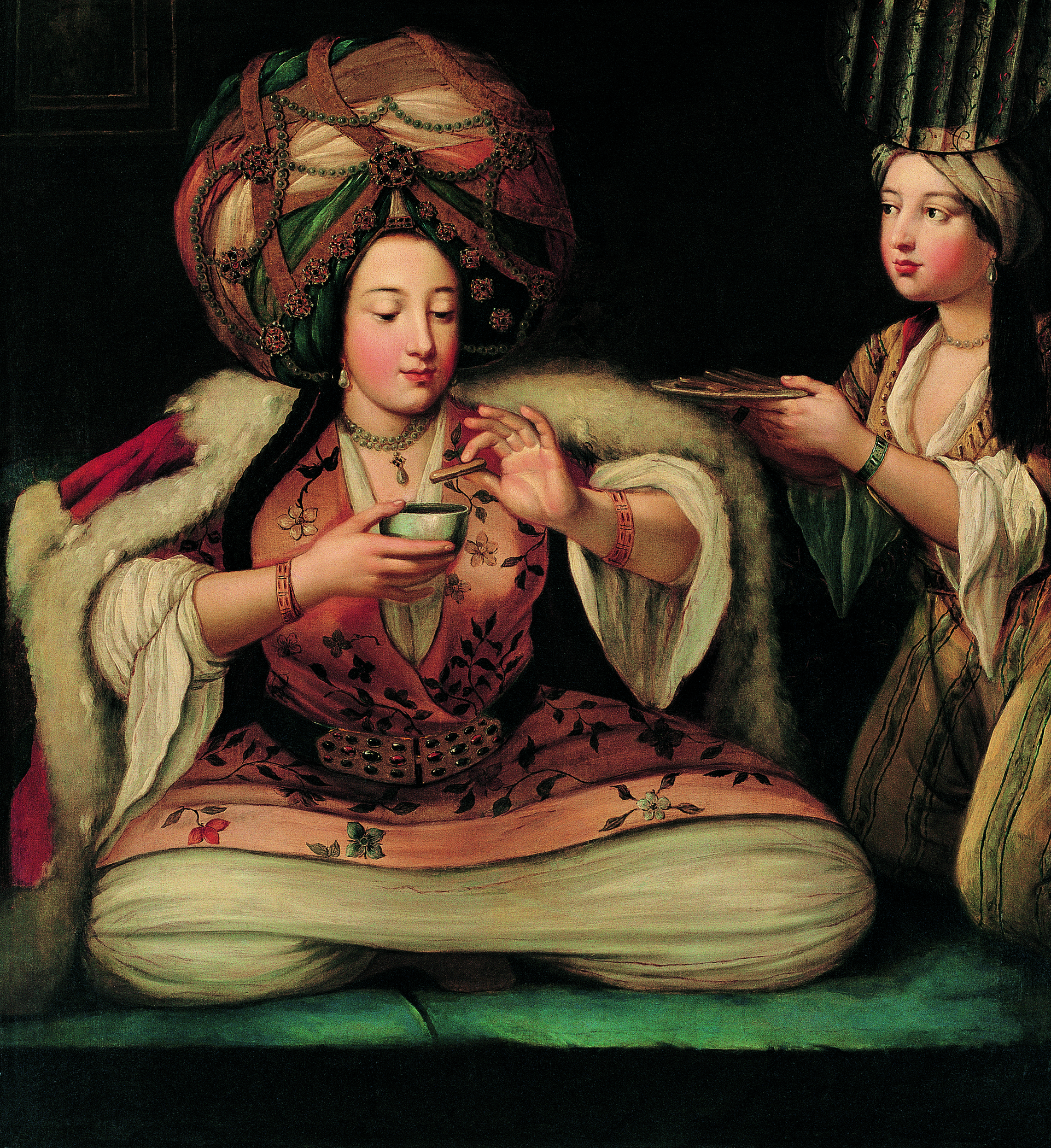
“Just like us, women of the Ottoman Empire would have started craving coffee in the afternoon,” says Komarrof. “The painting is not only beautiful but it gives us a sense of what life might have been like for an elite woman.”
In the composition, a well-dressed Ottoman lady wearing an oversized turban (a European reimagining) is seated on a couch enjoying coffee and biscuits, waited on by her servant. The painting was likely inspired by engravings by the Flemish-French artist Jean Baptiste Vanmou and Flemish artist and traveler Cornelis de Bruijn, and although ultimately a European interpretation of Ottoman culture, it provides us a sumptuous document of coffee consumption for elite women and some of its associated objects.
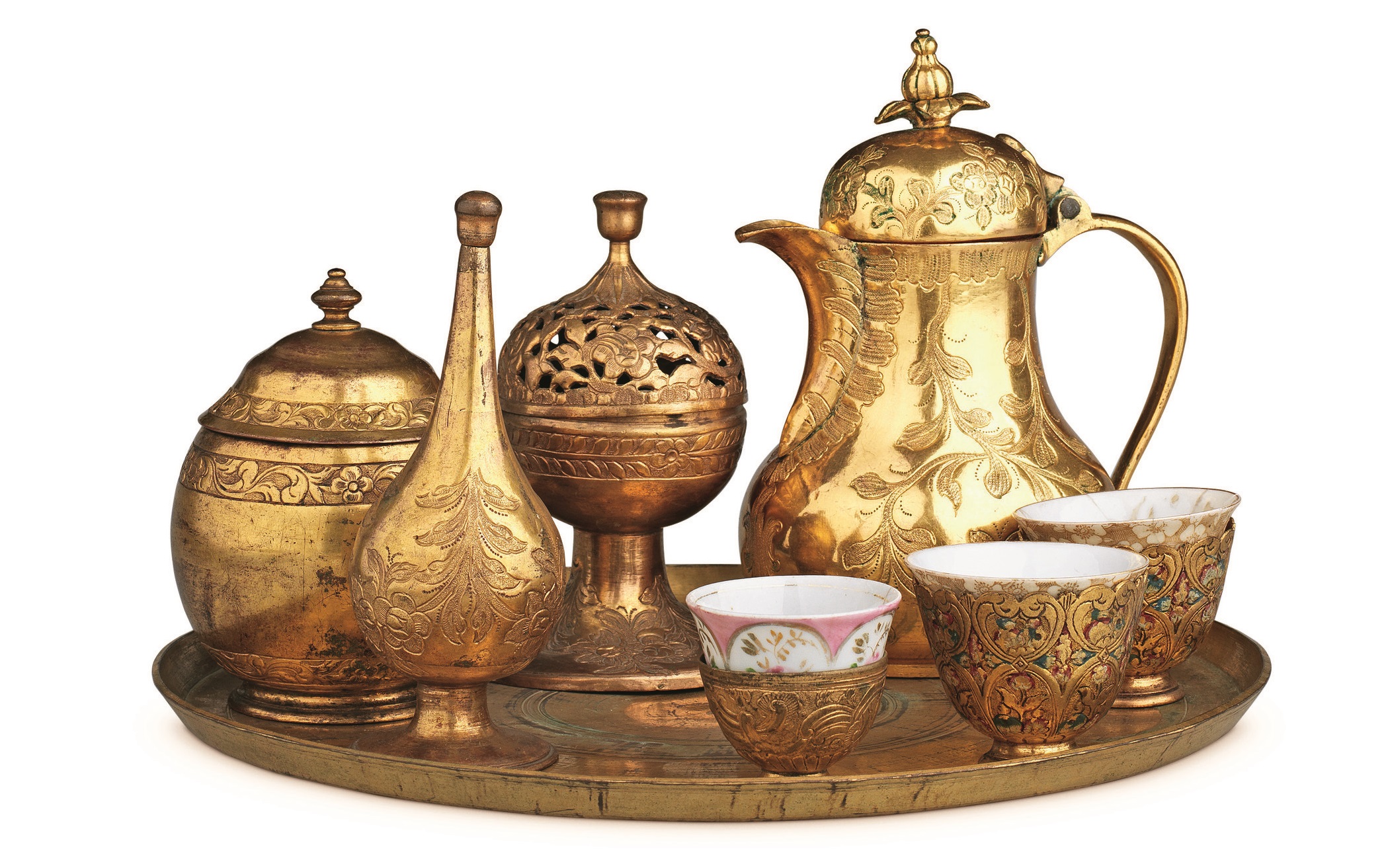
Coffee wasn’t only served in ceramic cups and bowls. This ornate set, made of brass gilt, or tombak, includes all the necessary elements of elite coffee service: tray, coffee pot, sugar bowl, cups, rosewater sprinkler, and incense burner. A tray like this would have also likely been covered by an elaborate cloth like the one below.

You can discover more coffee-related art and objects, along with many more related to the sourcing, preparation, serving, and consumption of food and drink, in the exhibition Dining with the Sultan: The Fine Art of Feasting, on view in the Resnick Pavilion through Sunday, August 4, 2024. The companion exhibition Dining with the Sultan at Charles White Elementary School is on view through Sunday, August 10.



